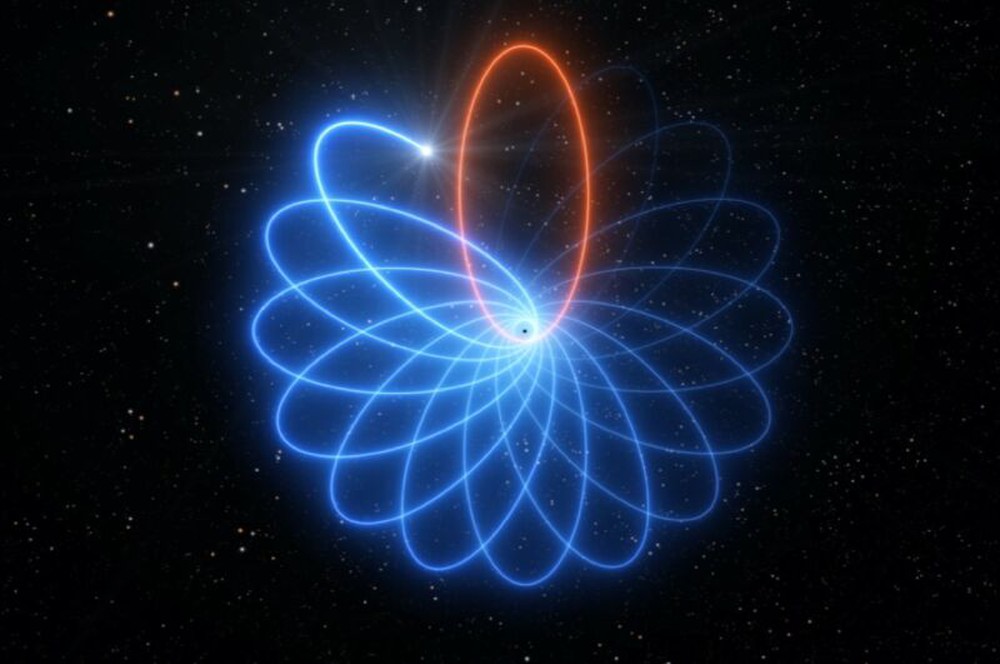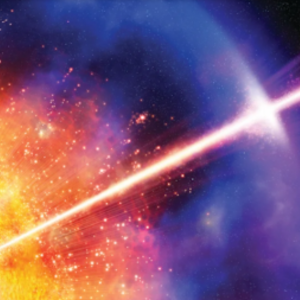Two colliding light particles were used to create a matter-antimatter pair.
n a stunning demonstration of one of Einstein’s most famous equations, physicists are claiming to have created matter from pure light for the very first time.
Albert Einstein’s famous E=mc2 equation says that if you smash two sufficiently energetic photons, or light particles, into each other, you should be able to create matter in the form of an electron and its antimatter opposite, a positron.
But this process, first described by American physicists Gregory Breit and John Wheeler in 1934, has long been one of the most difficult to observe in physics — mainly because the colliding photons would need to be highly energetic gamma rays, and scientists are not yet able to make gamma ray lasers. Alternative experiments have shown matter being produced from multiple photons, but never in the one to one way needed to most conclusively prove the effect.
But researchers from the Brookhaven National Laboratory in New York now believe they’ve found a workaround. Using the laboratory’s Relativistic Heavy Ion Collider (RHIC), they have been able to produce measurements that closely match predictions for the strange transforming act.

“In their paper, Breit and Wheeler already realized this is almost impossible to do,” Zhangbu Xu, a physicist at Brookhaven Lab, said in a statement. “Lasers didn’t even exist yet! But Breit and Wheeler proposed an alternative: accelerating heavy ions. And their alternative is exactly what we are doing at RHIC.”
Instead of accelerating the photons directly, the researchers sped up two ions — atomic nuclei stripped of their electrons and therefore positively charged — in a big loop, before sending them past each other in a near collision. As the ions are charged particles moving very close to the speed of light, they also carry an electromagnetic field with them, inside of which are a bunch of not-quite-real ‘virtual’ photons “traveling with [the ion] like a cloud,” Xu explained.
Virtual particles are particles that only pop into existence very briefly as disturbances in the fields that exist between real particles. They don’t have the same masses as their real counterparts (unlike their real counterparts that have no mass, virtual photons do have a mass). In this experiment, when the ions zipped past each other in a near miss, their two clouds of virtual photons were moving so fast they acted as if they were real. The real-acting virtual particles collided — producing a very-much-real electron-positron pair that the scientists detected.
To be a true observation of the Breit-Wheeler process, or as true as possible using virtual particles, the physicists had to make sure that their virtual photons were behaving like real ones. To check the virtual photons’ behavior, the physicists detected and analyzed the angles between more than 6,000 electron-positron pairs produced by their experiment.
When two real particles collide, the secondary products should be produced at different angles than if they were made by two virtual particles. But in this experiment, the virtual particles’ secondary products bounced off at the same angles as secondary products from real particles. So, the researchers could verify that the particles they were seeing were behaving as if they were made by a real interaction. They had successfully demonstrated the Breit-Wheeler process.
The researchers also measured the energy and the distribution of mass of the systems. “They are consistent with theory calculations for what would happen with real photons,” Daniel Brandenburg, a physicist at Brookhaven, said in the statement.
Nonetheless, even if they appear to be behaving like real particles, the virtual photons used in the experiment are still undeniably virtual. This raises the question of whether the experiment was a true demonstration of the Breit-Wheeler process, but it’s still an important first step until physicists develop lasers powerful enough to show the process with real photons.






